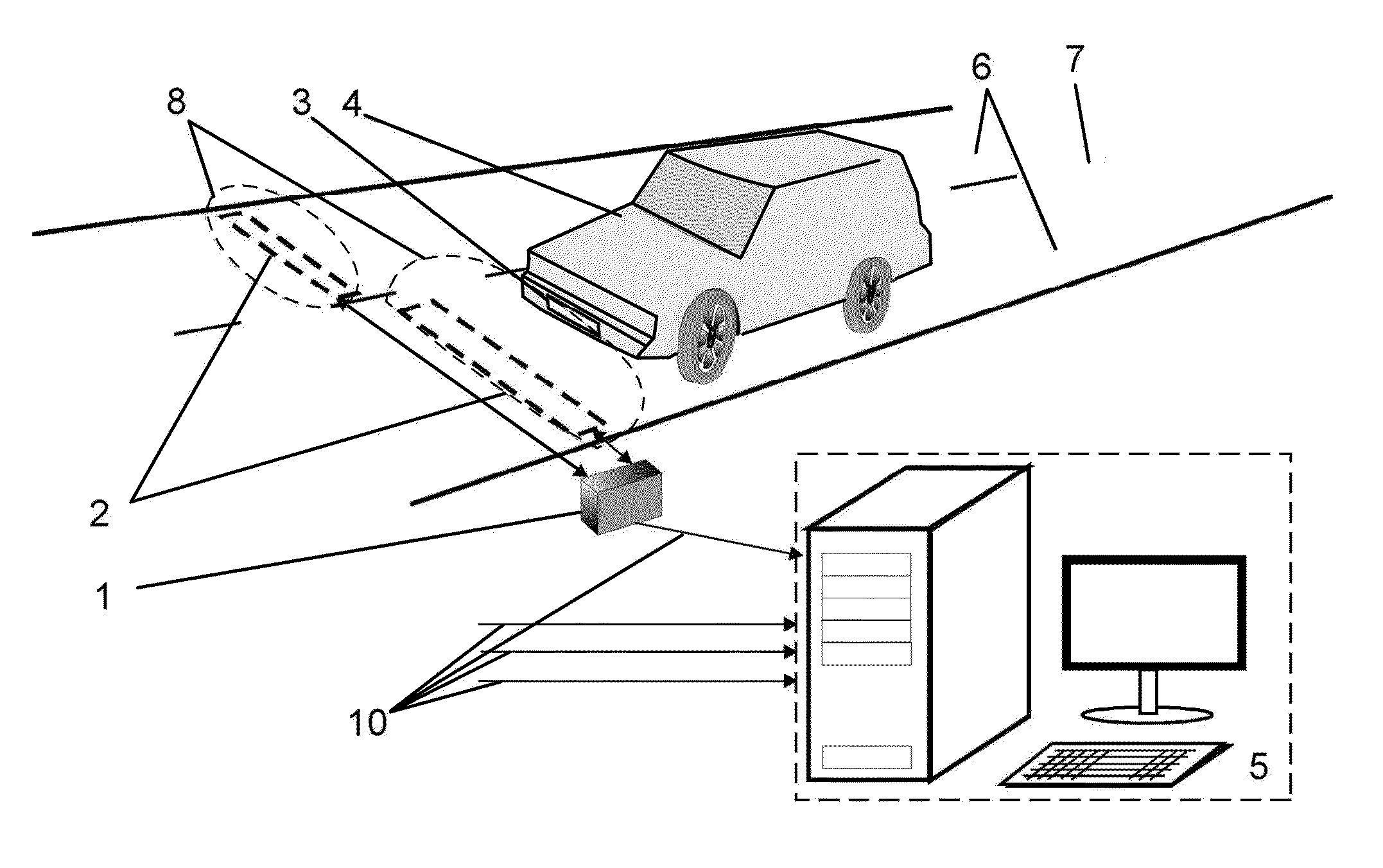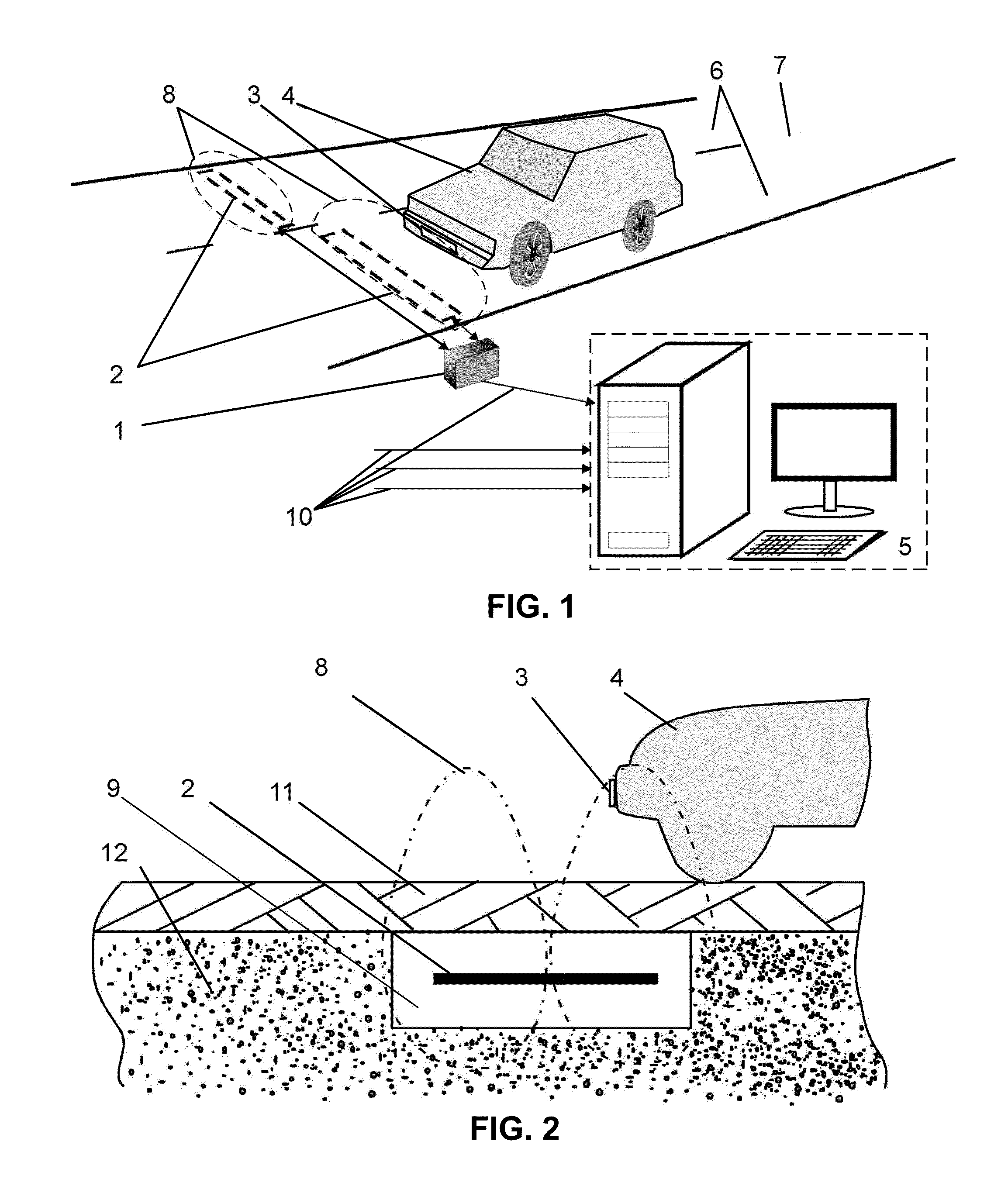Induction vehicle detection and identification system, induction license plate, and induction reader
a technology of induction vehicle and identification system, which is applied in the direction of individual entry/exit register, instrument, electromagnetic radiation sensing, etc., can solve the problems of reduced range and reliability, over-complexity, complete signal loss, etc., and achieve safe and reliable system operation and simplify the effect of the system
- Summary
- Abstract
- Description
- Claims
- Application Information
AI Technical Summary
Benefits of technology
Problems solved by technology
Method used
Image
Examples
Embodiment Construction
[0098]Reference will now be made in detail to the embodiments of the present invention, examples of which are illustrated in the accompanying drawings.
[0099]An induction vehicle detection and identification system comprises:[0100]an electronic vehicle identification device with a magnetic frame;[0101]a microchip with non-volatile memory for storing identification data of a vehicle with capacity of at least 64 bit;[0102]a reader to read data from electronic vehicle identification devices.
[0103]An electronic vehicle identification device is integrated into the license plate, thus making up an induction license plate mounted at the same place as a regular one.
[0104]The front side of an induction license plate is covered with identification data plate number for visual recognition.
[0105]The reader is equipped with a magnetic frame placed under the roadway up to 1 m deep. It can read information from the lane above. The frame is connected to a reader's generator, which feeds an alternati...
PUM
 Login to View More
Login to View More Abstract
Description
Claims
Application Information
 Login to View More
Login to View More - R&D
- Intellectual Property
- Life Sciences
- Materials
- Tech Scout
- Unparalleled Data Quality
- Higher Quality Content
- 60% Fewer Hallucinations
Browse by: Latest US Patents, China's latest patents, Technical Efficacy Thesaurus, Application Domain, Technology Topic, Popular Technical Reports.
© 2025 PatSnap. All rights reserved.Legal|Privacy policy|Modern Slavery Act Transparency Statement|Sitemap|About US| Contact US: help@patsnap.com



